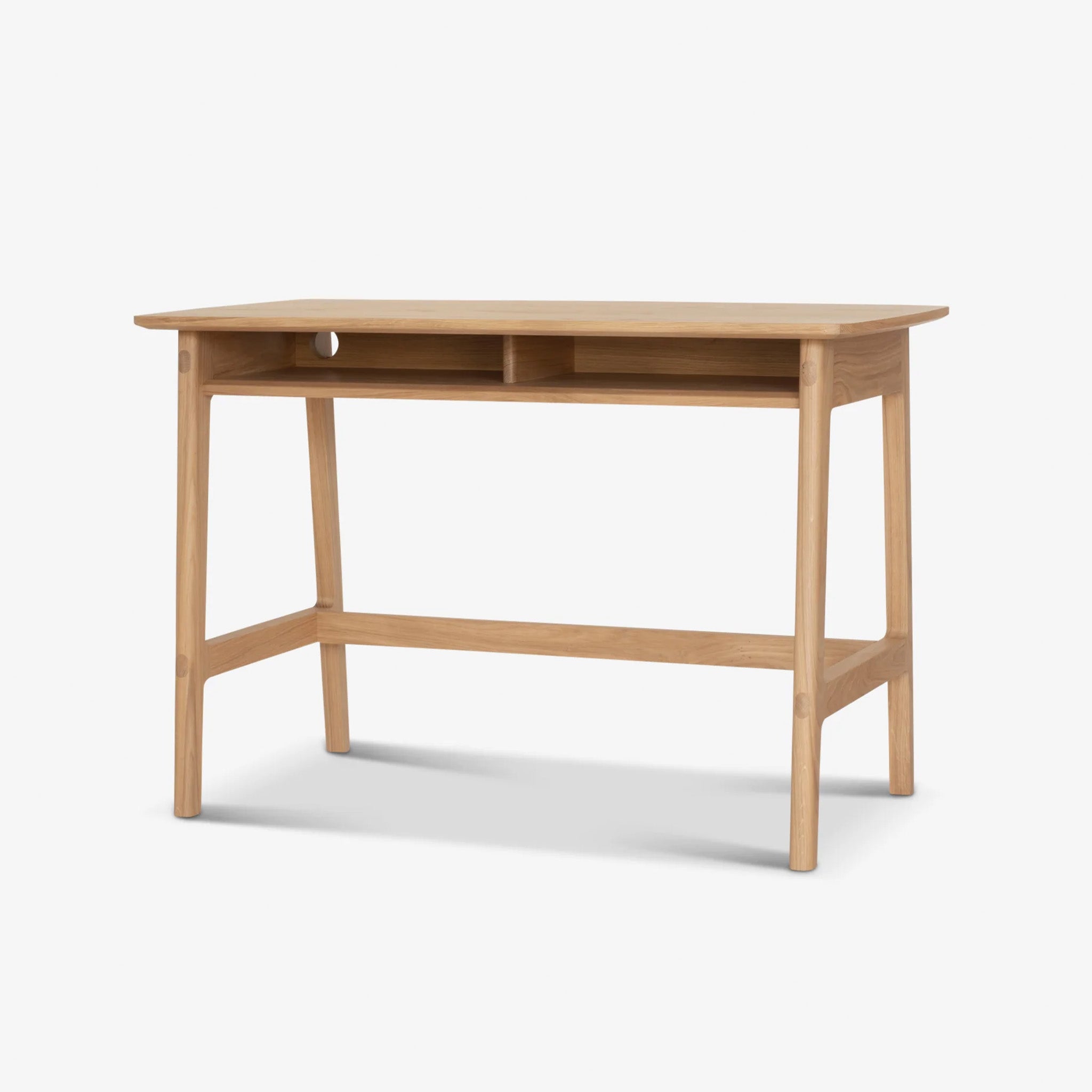
Dulwich Desk
Case
Designed by Matthew Hilton. Designed by Matthew Hilton, the Dulwich Desk is a compact workspace with a handy storage shelf - a perfect addition to any home office. The desk features access ports that provide a neat way to keep charging cables hidden and easily accessible from the rear.
Details
Materials
Made from solid and veneered oak or walnut.
Clear polyurethane lacquer
Dimensions
Height 750mm
585mm × 1100mm
23kg - Two-person assembly required.
In Stock
In stock and ready to despatch! UK delivery usually 1-2 days. Larger items and non mainland addresses will take a little longer.
Quick Ship false weeks
Good news! This popular item is usually available on a quick lead time in the finish you selected (other options may have different lead time).
Default two man delivery notice
Default two man delivery information
Bespoke terms & Conditions Title
This item is made specially for you and special terms apply (see Terms and Conditions). Lead times are provided as an estimate and can vary. Read More
Made to Order 6-8 weeks
This item is made specially for you in the options you choose and special terms apply. Lead times are provided as an estimate only and can vary.
Contact Us
Lead times are provided as a general guide to what is typical for this product but can vary depending on the specific variant and quantity you choose as well as current availability. Read More
Order In Store / Contact Us
This product is available to order in store. Contact us for details.
Added to your basket